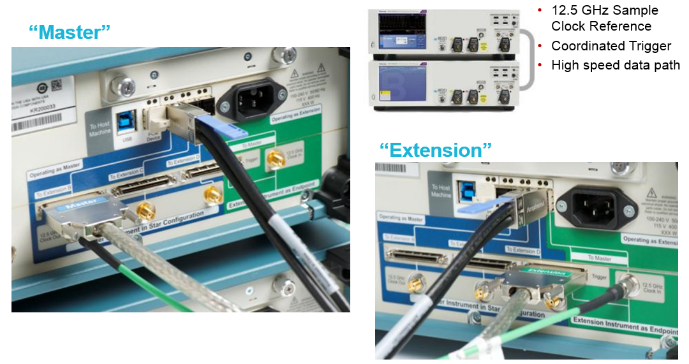



By Chris Loberg, Sr. Manager, Performance Instruments
Keeping pace with the fast evolution of datacom networks requires a test strategy with room to grow. Testing for standards like LR8 requires instruments with high bandwidth and, more importantly, high dynamic range. The need for superior dynamic range comes into play because of the smaller amplitude sizes and tight margins of PAM4 modulated signaling. Accurately detecting and validating PAM4 requires a much more precise understanding of signal behavior.
As a result, many test engineering teams in this market are looking at needs for today (100G testing) as well as what they’ll need in the future (400G testing). Questions like; “When we move from KR4 today to LR8 in the future how do we make sure we’re not repeating our instrument investment?” or “Do we have to completely swap out our current instrument for an entirely new one at 400G?”
Planning for future instrument needs while addressing current test requirements can be a challenge in an evolving marketplace from an investment and return standpoint. Here are a few alternatives to consider:
1. Purchase instruments with future bandwidth requirements in mind: This is a nice-to-have if there is adequate budget for meeting current needs with an eye to the future. However, make sure that the future needs are completely understood. As an example, while it might be easy to target instrument bandwidth requirements for 2017 or 2018 based on future clock rates/data rates, there are new requirements emerging that could complicate matters. This is because of the complex signaling behavior of PAM4 (high SDR, new frequency-based clock recovery techniques) and it could be difficult to hedge too many bets on future requirements with an expensive purchase right up front. In addition, having too much bandwidth for today’s needs may introduce unnecessary noise into signal measurements, so make sure your instrument’s bandwidth settings match today’s measurement requirements.
2. Rent or lease instruments: Another way to plan for the future is to keep high performance instrument investments tied to expense dollars and lease or rent for current needs. Many of today’s rent/lease companies (example: TRS-RenTelco) carry the latest instruments in stock in like-new condition. There is the issue of making a financial decision to manage program expenses on a monthly basis versus making capital investments for important test equipment needs. There is also a concern from test engineering teams who want to stay with a familiar instrument type and consistent analysis methods or programmatic interfaces. But these can be managed with proper long-term leasing arrangements. The benefits are that you keep pace with the technology evolution.
3. Buy instruments with “room to grow”: Some of today’s instruments come with an architecture that takes into account the need to add future capabilities. Traditionally, performance instruments have been a “complete box” type of product for a variety of reasons. However, as pricing for these instruments has risen from under $100,000 to over $300,000 in the last 8-10 years some manufacturers are helping customers manage costs with a more scalable architecture.
An example of a “room to grow” architecture is UltraSync in the Tektronix DPO70000SX Series. The UltraSync architecture coordinates triggers across a multi-instrument acquisition system for inherent channel-to-channel jitter that is equivalent to that found in monolithic oscilloscopes. This means that when multiple DPO70000SX units are connected together with UltraSync cables, as shown above, they offer the functional equivalent of a single high performance oscilloscope with multiple high-speed channels. For instance, a two-unit system synchronizes two units to provide two channels at 70 GHz, 200 GS/s, or four channels at 33 GHz, 100 GS/s.
Datacom technologies are evolving rapidly with the growth in the networking market. Keeping pace with changing test requirements while managing internal development (test) costs can be an issue. There are options available for managing this and the new DPO70000SX Series with UltraSync technology represents an innovative way for “room to grow” in the performance instrument market.
To lean more check out /media/160111


